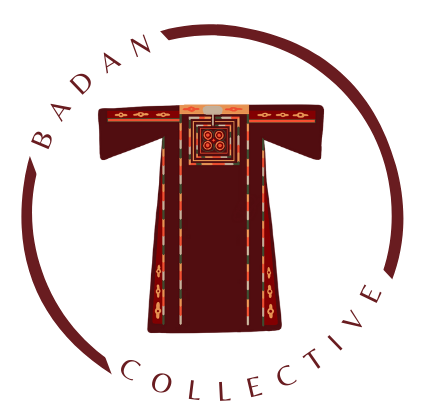The poem below is written in a form called a braided essay. If you're unfamiliar, a braided essay is one that weaves two or more distinct threads into a single story. This particular one was written on May 18, 2024 shortly after violent attacks in Rafah resulted in the murder of Ahmed Al-Najjar, an 18-month-old Palestinian child. He was beheaded by Israel with a U.S. bomb in his family tent, which not only killed him but also his mother, Faten, his sister, Houda, and his brother, Arkan.
"Houda dreamed of being a doctor. Arkan dreamed of being a pilot. At 18-months-old, Ahmed did not get the chance to dream of being anything." —Reported by AJ+
To live in the diaspora as a Palestinian is to helplessly witness massacre after massacre of your people. It becomes a dystopian reality where we can see pain, we may even feel it, but we are not living it. This invisible, subtle line between these two realities -existing but never touching- is where this poem was born from.
I Get to Hold ThReadS Instead
Tatreez is as calming a task as it is hard labor. It settles my body just as much as it unsettles it. It assembles me like the pieces of a puzzle just as much as it rips me to shreds. I suppose that’s what happens when you make your art your life. It sits in the subtle space between your joy and your grief. The same can be said about babies without heads. “How,” you ask, “can you feel both rage and delight?” I will tell you, I am
Rageful at the aggressors who did the killing, who allowed the killing, and who continue beheading. Yet, delightful, at ease even, by a merciful God who created martyrdom, who allows children to be martyrs, and who welcomes them into heaven. “How,” you ask, “can both emotions exist in one human?” I will tell you,
My favorite color to stitch with is red. There’s something about it that catches the eye like none other, something unique. It may do this out of indifference, perhaps. Or, maybe, it’s trying to scream its Palestinian identity at me. It’s almost as if it is saying, “archive me, archive me into memory.” It’s almost as if it’s screaming out its history saying, “save me, save me from penitentiary.” This is what happens when your art becomes your life. It starts to sit in the subtle space between existence and obsolescence. “How,” you ask, “can both realities play parallel to one another?” I will remind you, it is
Day 1, day 20, day 224 of genocide ongoing. This is how a annihilation begins. Then, stitch 1, stitch 20, stitch 225 must keep going. This is how a history is rewritten, between the fibers of red thread and the images of red babies. “How,” you ask, “can two people live in the same world yet experience different stories?” I will explain to you,
That like sees like, that with rage can come relief, and that through cruelty, one must persist. I will tell you that although I can’t, I retreat to the fact that I must. If not for me, then for the collective in which my memory will one day exist. “It is not for me,” I repeat, “not for me.”
Except the truth is that it is. It is for me. How can it not be when I get to hold fabric in my hands instead of headless children? How can it not be when I get to see the color red and rejoice instead of revolt? It is because of this selfishness that every time I hear the sounds of thread pull through fabric, instead of agony, I get to hear the sounds of children fill the heavens.
—Written by published poet, founder of Badan Collective, Bayan Fares
The banner photo used in this post is by visual artist Yassin, known as @yassindraws on Instagram.

